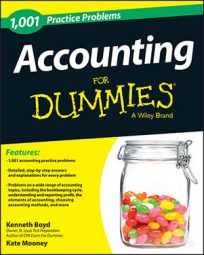You may be asked to calculate the expected balance of accounts receivable or the inventory balance for your company at the end of the year. If you've never done this before, don't panic: the following practice questions will show you the basics.
Practice questions
Use the following financial information about a company for 2014 to answer the questions:
Annual sales: $13,000,000
Annual cost of goods sold: $7,150,000
Historically, accounts receivable at the end of the year equal about 3 weeks of annual sales.
Average amount of debt during the year was $3,600,000.
Historically, inventory balance at the end of the year equals about 8 weeks of annual cost of goods sold.
Historically, accounts payable for inventory purchases is about 4 weeks of annual cost of goods sold.
Average annual interest rate on debt was 5.25%.
What is the expected balance of accounts receivable at the end of the year?
What is the expected inventory balance at the end of the year?
Answers and explanations
$750,000
You know from the data provided that the balance in accounts receivable is 3 weeks of sales. You also know that total annual sales are $13,000,000. So the next step is to figure out 3 weeks of sales. To do that you should take total sales of $13,000,000 and divide by total weeks in a year, or 52 weeks. This gives you weekly sales of $250,000. Now multiply that total by 3 to get $750,000 as the balance of receivables representing 3 weeks of sales.
$1,100,000
You know from the information provided that inventory balance at the end of the year is 8 weeks of cost of goods sold. You also know that cost of goods sold for the year is $7,150,000. The next step is to figure out 8 weeks of cost of goods sold. To do that you should take the total cost of goods sold of $7,150,000 and divide by total weeks in a year, or 52 weeks. This gives you weekly cost of goods sold of $137,500. You need 8 weeks of cost of goods sold, so multiply $137,500 by 8 to get $1,100,000 as the inventory balance.
If you need more practice on this and other topics from your accounting course, visit Dummies.com to purchase Accounting For Dummies! Featuring the latest information on accounting methods and standards, the information in Accounting For Dummies is valuable for anyone studying or working in the fields of accounting or finance.

